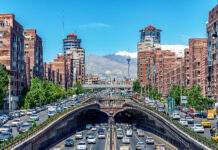by Higerta Gjergji
The search for “rare earths”, known in the world as Rare Earth Elements (REE), is destined to become one of the pillars of the ecological transition, referring to materials that are increasingly in demand in the industrial sector and are becoming more and more available, a trend that is likely to increase in the coming years.
Many Asian countries, especially China, as well as countries in Latin America and Oceania, have become major exporters of chemical elements classified as rare earths in recent decades. These elements are widely used in the electronics industry. Computers, turbines, smartphones, electrical accessories, electric car batteries, photovoltaic panels and many other tools require large quantities of elements mined from underground.
The 17 metals included in the REE are Scandium (Sc), Yttrium (Y), Lanthanum (La), Cerium (Ce), Praseodymium (Pr), Neodymium (Nd), Promethium (Pm), Samarium (Sm), Europium (Eu), Gadolinium (Gd), Terbium (Tb), Dysprosium (Dy), Holmium (Ho), Erbium (Er), Thulium (Tm), Ytterbium (Yb), Lutetium (Lu).
The term rare does not refer to the rarity of the earth, but rather to the complexity of extracting the specific element from the mineral that contains it. There are other critical raw materials, such as lithium, cobalt, nickel and copper, that are not rare earths but will be in increasing demand in an increasingly electrified and decarbonised economy. For example, the lithium-ion batteries used in most electric cars. Tens of kilograms of copper are also needed to manufacture an electric car. According to the International Energy Agency (IEA), demand for lithium and copper will double by 2040.
Three major producers control more than three-quarters of the world’s production of lithium, cobalt and rare earths. As demand increases, new deposits are being opened or existing ones are being intensified. These new deposits sometimes affect indigenous land, and people have to fight for their rights.
One example is the German chemical giant BASF, which announced its withdrawal from the controversial Sonic Bay project, a $2.6 billion joint venture with the French company Eramet to refine nickel and cobalt on the Indonesian island of Halmahera. The decision follows an intense and prolonged campaign led by Survival International, which highlighted the project’s devastating impact on local tribal peoples.
The project involved the processing of minerals from the Weda Bay Nickel (WBN) mine, one of the largest nickel mines in the world. But the area where the WBN operates is home to the Hongana Manyawa, an uncontacted tribe whose survival is threatened by mining activities that endanger their forest. Survival International has revealed that mining activities are devastating the tribe’s territory and threatening their very existence.
In another case, the Brazilian Supreme Court rejected Marco Temporal’s thesis and reaffirmed the integrity of tribal rights and the protection of their territories. The bill had been strongly promoted by agribusiness companies, which wanted to take over large areas of indigenous land to extract raw materials. On 5 October 1988 (the day the Brazilian Constitution was promulgated), Indigenous peoples were unable to prove that they were physically present on their land, which would have meant that they would have lost the right to see these demarcated and protected territories.
Finally, in Mexico, the local population has been fighting for more than twenty years against the aims of the mining giants. On the one hand, the desire to protect the territory and, on the other, the desire to exploit the rich deposits. In February 2022, the Mexican Supreme Court intervened to declare two mining concessions illegal.
The processing of rare earths can have a major impact on the environment: to separate them from other minerals, they have to be dissolved several times in acids, filtered and purified, a process that is not exactly “green” and that has a direct impact on the safety of the local population.
On the cover photo, close up of BASF sign on its office building in Warsaw, Poland ©Below the Sky/Shutterstock.com
























